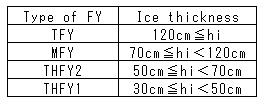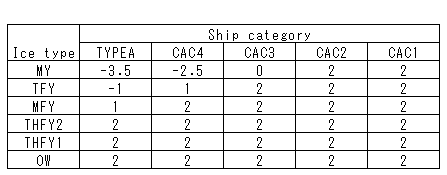2.6.2 Ice index
Ice index is a parameter that quantitatively represents ice navigation difficulties with one value, which is introduced in order to run the simulation effciently. The purpose of introducing ice index is to develop the chart showing the relation between ice index and the ship speed distribution. The chart is obtained based on the environmental data of WP2 and the code developed by WP6. The chart is put into the simulation code of WP8 as a lookup table. Ice index is a concept originally introduced in the CASPPR, however, it is different in the following points:considering not only ice type, ice thickness, and ice concentration, but also the influence of ice bending strength, compressive strength, ridge size, ridge distribution.
Components of ice index
Ice index: I consists of the three types of ice index: IA, IB, Ic as assumed in equation(2.6.14).These components are shown in the Figure 2.6.4.

Figure 2.6.4 Components of Ice Index
IA
The calculation technique of IA is almost the same as the Canadian ice numeral. The first year ice is categorized into four levels by ice thickness as shown in Table 2.6.2. Multipliers of multi-year ice and first year ice using ice class are assigned referring to Table 2.6.3. A part of ice multipliers given by the CASPPR is revised as Table 2.6.3. There is no difference between multi-year ice and second-year ice in the environmental data of WP2; therefore, the mean value of multi-year ice and second-year ice given in the CASPPR is used as an ice multiplier of MY.
Table 2.6.2 Type of first year ice

Table 2.6.3 Ice Multiplier

Finally, using the mean first-year ice concentration Cf, mean multi-year ice concentration Cm, and a multiplier that are given in Table 2.6.3, ice index IA is calculated by the equation(2.6.15).
IA=first-year ice conccntration multiplier x Cf + multi-year ice concentration multiplier x Cm
前ページ 目次へ 次ページ